Cyprus History
Cyprus History
Nicosia Museums

A.G LEVENTIS GALLERY
A.G LEVENTIS GALLERY
The A. G. Leventis Gallery was opened in central Nicosia in 2014, fulfilling Anastasios G. Leventis' bequest to make the art treasures acquired during his lifetime accessible to his compatriots in Cyprus.
True to the founder's vision, the A. G. Leventis Foundation resolved that his Collections should be exhibited in a building worthy of the art it houses.
Following an international architectural competition, construction of the Gallery began in 2011 and was completed in 2014. Eco-friendly and equipped with state-of-the-art audio-visual resources within the framework of a traditional museum, the Gallery is designed to inform and entertain visitors of all ages.
The Gallery is home to three collections: the Paris Collection and the Greek Collection, acquired by Anastasios G. Leventis himself, and the more recent Cyprus Collection.
Taking its name from Anastasios G. Leventis' Paris apartment where it was housed for more than 50 years, the Paris Collection features European art from a range of artistic schools from the 17th century to the 20th, as well as period furniture and objets d'art.
Making up the Greek Collection are works of local artists from the early 20th century to 1930s.
The primary focus of the Cyprus Collection is work by the first generation of local artists.
Together, the three Collections and the Gallery serve as a landmark for Nicosia and a fitting tribute to the magnificence of our shared European heritage.

LEVENTIS MUSEUM
LEVENTIS MUSEUM
The Leventis Municipal Museum of Lefkosia (Nicosia) is the capital’s only museum that presents the social and historical development of the city, from the Chalcolithic Age until today. Founded in 1984, the museum is named after its donor, the Anastasios G. Leventis Foundation, which bought and restored the museum’s building, which is housed in a complex of traditional buildings. The museum is administered by Lefkosia Municipality.
The collection includes archaeological finds, traditional costumes, photographs, medieval pottery, maps, engravings, jewellery and furniture, with a permanent exhibition of different galleries, as well as spaces for temporary exhibitions from other museums and foundations from Cyprus and abroad.
The permanent exhibition is comprised of: the Nicosia Gallery (3900 BC-325 AD); the Byzantine and Mediaeval Galleries (325-1489 AD); the Venetian Period Galleries (1489-1570 AD); the Ottoman Period Galleries (1570-1878 AD), and the British Period Gallery (1878-1960 AD).

ARCHAEOLOGICAL MUSEUM
ARCHAEOLOGICAL MUSEUM
The Cyprus Museum is the island’s main and largest archaeological museum, and charts the development of Cyprus’ civilisation from the Neolithic Age to the Early Byzantine period (7th century).
The museum’s collections are comprised of finds from extensive excavations from all over the island that have helped the development of Cyprus’ archaeology, as well as its research into the cultural heritage of the Mediterranean.
The collections consist of pottery, jewellery, sculpture, coins, copper objects, and other artefacts, all exhibited in chronological order in the various museum galleries. Pieces typical of Cypriot culture - and of particularly important artistic, archaeological and historical value - include the cross-shaped idol of the Chalcolithic period, Early Bronze Age pottery from Vouni, Late Bronze Age golden jewellery from Egkomi, and the 1st century BC statue of Aphrodite of Soloi.
The museum building itself is also historic, and work on it commenced in 1908 and was completed in 1924, when Cyprus was still a British colony. Several extensions were later added for the museum to become the building it is today.

BYZANTINE MUSEUM
BYZANTINE MUSEUM
The Byzantine Museum, within the walled city of Lefkosia (Nicosia), contains the richest and most representative collection of Byzantine art on the island. Over 200 icons dating from the 9th to the 19th centuries, as well as sacred vessels, vestments, robes and books are exhibited there.
The collection includes many icons dating from the 12th century, when iconography was at its peak. One of the most notable exhibits is the famous 6th century mosaics from the church of Panagia Kanakaria in Lythragkomi Village, that were brought back to Cyprus after having been illegally exported from the occupied part of the island.

HOUSE OF HADJIGEORGAKIS KORNESIOS
HOUSE OF HADJIGEORGAKIS KORNESIOS
This manor house is one of the most important surviving 18th century buildings in Lefkosia and was restored by the Department of Antiquities to house the Cyprus Ethnological Museum, receiving the ‘Europa Nostra’ award in 1988.
The two-storey building was built in 1793 with local bloc-cut sandstone and was once the residence of the most prominent Dragoman of Cyprus, Hatzigeorgakis Kornesios, who was executed by the Ottomans in 1809.
The architectural plan of the building in the shape of the Greek letter Pi surrounds a central garden with a fountain and a private bathhouse (hamam), which is comprised of three rooms. The servants’ quarters and the kitchen were situated on the ground floor, roofed wooden stairs with a stone base lead to the entrance hall on the first floor from the courtyard, and the official reception room and the living areas, communicated with the reception hall. The official reception room - at the end of the east wing - differs from the the other rooms due to its exceptional wood carved, gilded and painted decoration, which liken it to other official reception rooms in many mansions of the Ottoman Empire.
The office of Dragoman was introduced in Cyprus at the start of the Ottoman rule and was abolished in 1821 with the Greek War of Independence. Dragomans acted as liaisons between the Pasha (high ranking military officials) and the occupied population and were the most important political figures after the Pasha.
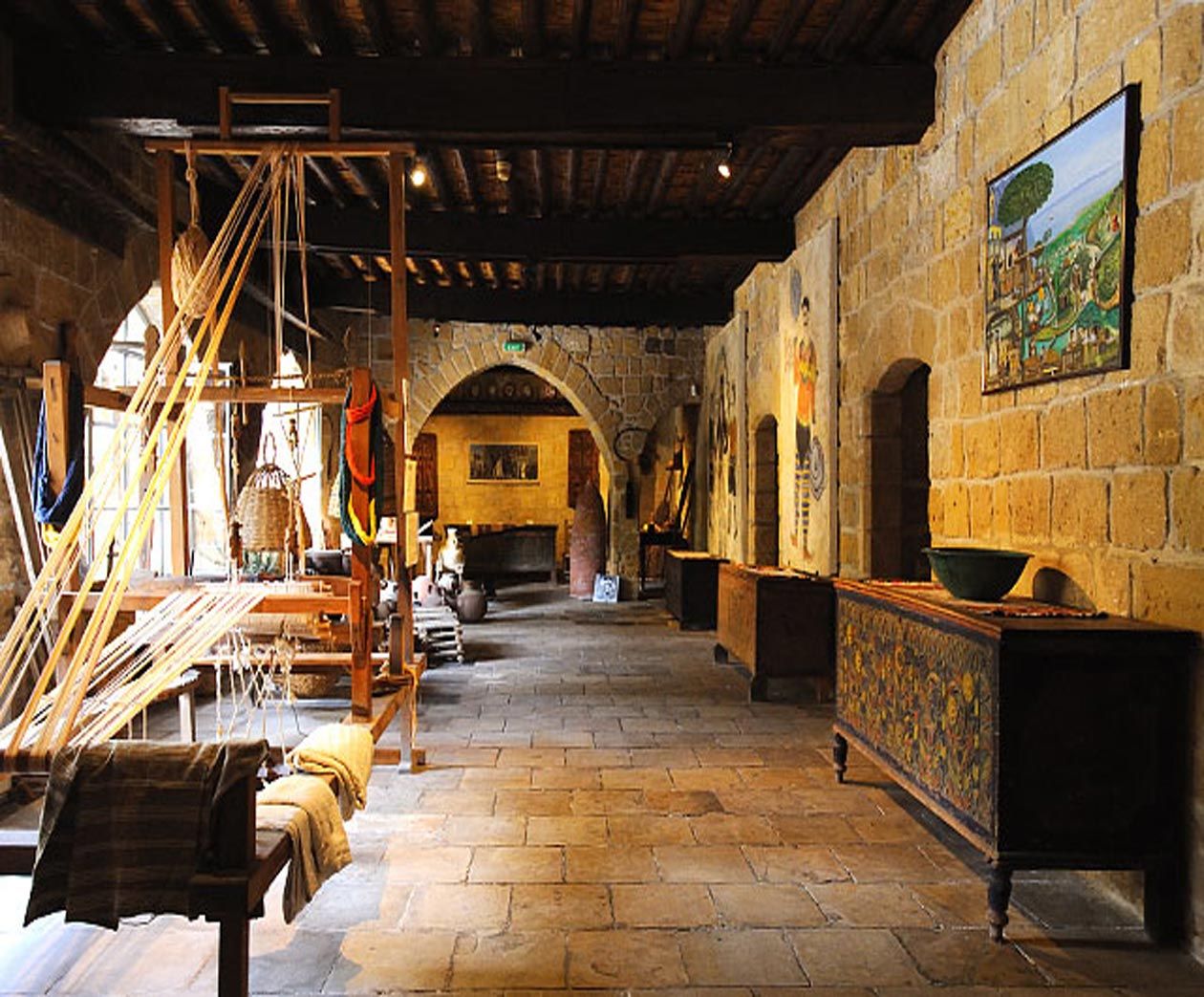
FOLK ART MUSEUM
FOLK ART MUSEUM
The Ethnographic Museum presents a fine collection of 19th and early 20th century folk art in the beautiful old Archbishopric in the heart of Lefkosia (Nicosia).The building of the Museum dates back to the 15th century and is Gothic with earlier additions.
The Ethnographic Museum is a showcase for local folk arts: embroidery, lace, costumes, pottery, metalwork, basketry, folk painting, leather-work and woodcarving.
The building itself was originally a Benedictine monastery, and retains a number of original 15th-century architectural features of the Frankish period.
It is also remarkable the 19th century door of Saint Mamas church that the Nobel prize-winning poet Georgios Seferis mentions in his poem 'Little Things of Cyprus', which he dedicated to his friend the painter and first Director of the Cyprus Ethnographic Museum, Adamantios Diamantis.

CYPRUS CLASSIC MOTORCYCLE MUSEUM
CYPRUS CLASSIC MOTORCYCLE MUSEUM
The Classic Motorcycle Museum was created by motorcycle collector Andreas Nicolaou, and is the culmination of a 20-year labour of love. Today, the collection comprises more than 150 pieces, with motorcycles dated between 1914 - 1983, including AJS, MV Agusta, Matchless, Norton, BSA, Triumph, Ariel, BMW, James, Moto Guzzi, Royal Enfield and many more.
The museum also houses three police bikes that formed part of Archbishop Makarios III’s police escort, a motorcycle belonging to EOKA fighter Stylianos Lenas, and one belonging to the island’s first motorcycle champion - Turkish Cypriot Zeki Isa - along with a photography exhibition.

THE NATIONAL STRUGGLE MUSEUM
THE NATIONAL STRUGGLE MUSEUM
The museum is located in the square near the Archbishopric.The museum display documents, photographic material, personal belongings of the heroes and other memorabilia related to the struggle against British Rule.
The museum was founded after the end of the 1955-1959 National Liberation Struggled, by EOKA fighter Christodoulos Papachrysostomou.
Specially designed new premises opened in 2001. The expenses were covered by the Holy Archebiscopic of Cyprus and the Cyprus Ministry of education and Culture.

SHACOLAS TOWER MUSEUM
ARCHAEOLOGICAL MUSEUM OF ANCIENT IDALION
This museum combines a modern museum with an unhindered and beautiful view of the entire city. It can be found on the 11th floor of the Shacolas Tower. The exhibition - a cooperation with the Leventis Museum of Nicosia and the Woolworth Group - shows photographs and descriptions of Old Nicosia, a multilingual taped history and telescopes.

MUSEUM OF THE HISTORY OF CYPRIOT COINAGE
MUSEUM OF THE HISTORY OF CYPRIOT COINAGE
The Museum on the History of Cypriot Coinage was founded in 1995 and traces the development of the island’s coinage from the first coins minted during the 6th century BC to modern times.
A collection of over 500 coins charts 2.600 years of turbulent Cypriot history and is divided into nine time periods (23 showcases), that offer an important source of information on Cyprus’ numismatic history.
The presentation begins with coinage from the Cyprus City Kingdoms (6th - 4th centuries BC) and ends with the Republic of Cyprus (1960). Included in the initial collection is a bronze coin from the Roman period that bears the legend ‘ΚΟΙΝΟ(Ν) ΚΥΠΡΙΩΝ’ (League of the Cypriots) and was a symbol of unity among the peoples of the island. There is also a touch screen presentation of the island’s historical journey of coins throughout different times.
Limassol Museums

ARCHAEOLOGICAL MUSEUM
ARCHAEOLOGICAL MUSEUM
Exhibits at the Lemesos (Limassol) District Archaeological Museum include an outstanding assortment of antiquities from the Neolithic age to the Roman period which originate from numerous archaeological sites of the Lemesos district.
These exhibits can be found in three rooms and are separated into three major groups. In the first room a visitor can admire pottery from various historical periods while in the middle room exhibits include coins, jewellery, lamps and different copper tools and objects. In the third room items include sculptures, tombstones, capitals, inscriptions and various marble and limestone artifacts as well as numerous objects which relate to the cult of Aphrodite, including fertility and other votive offerings and female terracotta figurines.
The museum is linked with the Aphrodite Cultural Route.

CYPRUS WINE MUSEUM
CYPRUS WINE MUSEUM
The Cyprus Wine museum is situated in the village of Erimi, at the edge of the wine-producing countryside and introduces visitors to the history of the island’s long winemaking tradition.
Various presentations illustrate the stages of wine production and consumption as well as the different uses of wine. The social, economic and symbolic elements of wine production are highlighted through ancient jars and canisters, medieval drinking vessels, old documents and instruments while wine tasting is also available.
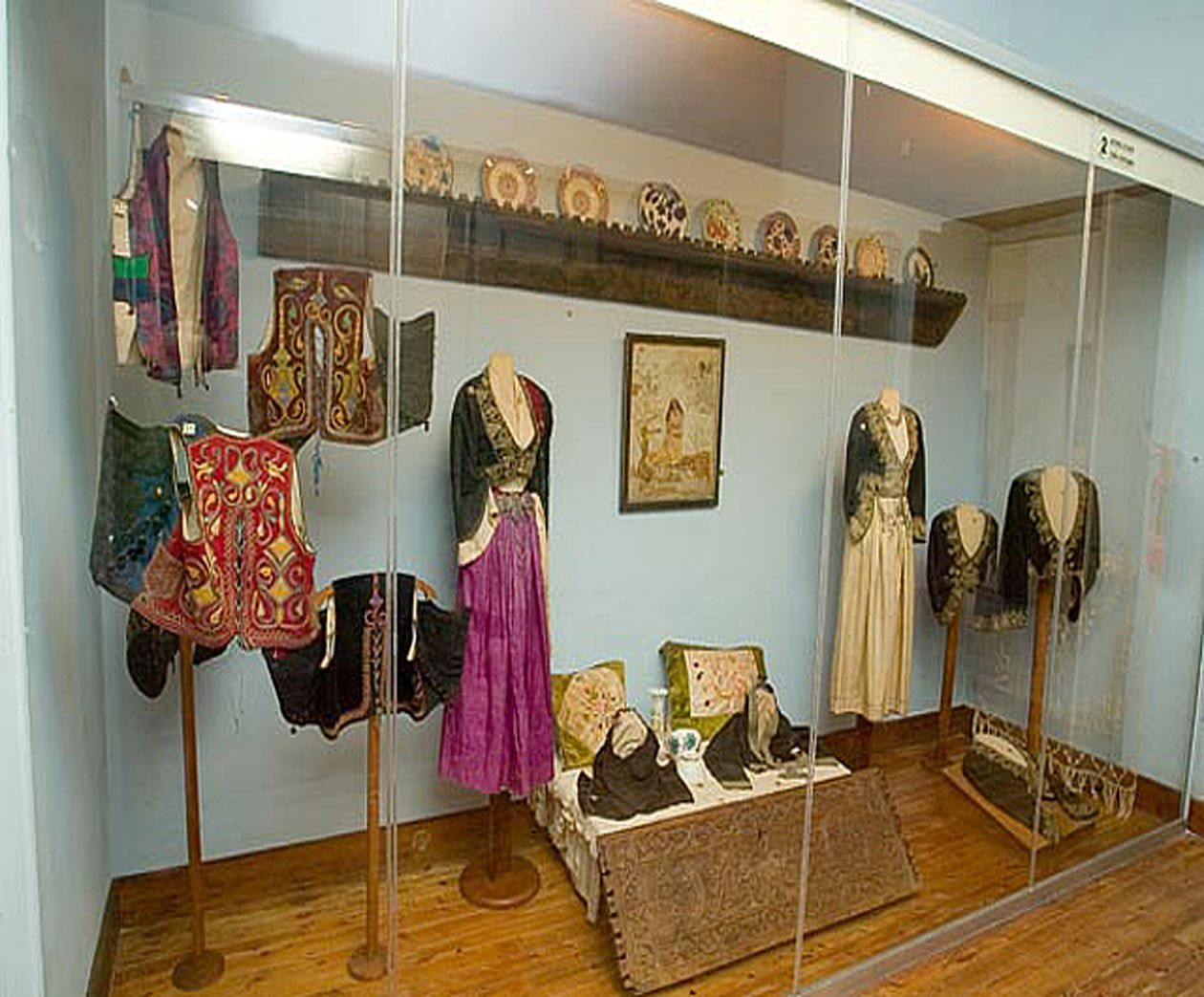
FOLK ART MUSEUM
FOLK ART MUSEUM
The Folk-Art museum in Limassol was founded in 1985 and hosts an exclusive assortment of Cypriot folk art dating back to the period between the 19th-20th centuries. The visitor can admire clothing, embroidery, farming tools, wooden objects, ceramics, pottery, furniture, decorative pieces and jewellery as well as a loom, a traditional Cypriot bedroom, dowry and traditional costumes.

CLASSICAL & HISTORIC CAR MUSEUM
CLASSICAL & HISTORIC CAR MUSEUM
The museum was founded by veteran champion of international and Cypriot rally competitions Mr Dimi Mavropoulos and includes his personal car collection.
Displays emphasize the cultural significance of the evolution and growth of the automobile industry and includes a Ford “T” roadster from 1912, with over 100 years of life on the road. The museum also hosts vehicles with cultural and emotional importance for the Cypriot people including the armored presidential Cadillac which was donated by the US government and created especially for President Makarios III in 1977.
Additional exhibits include the famous and officially certified green Mini from the popular “Mr Bean” movies and the Rover P5 cars of 1973 used by former Prime Minister of the UK Margaret Thatcher.

LOCAL KOURION MUSEUM
LOCAL KOURION MUSEUM
Kourion Archaeological museum is housed in the private residence of late General George McFadden, Assistant Director of the University of Pensylvania. The house represents a traditional building while Mr McFadden was known for his extensive archaeological research at the ancient city of Kourion from 1934 – 1953.
The museum was created in 1969 and includes two exhibition halls which host pieces from nearby archaeological sites. The collection includes red polished ware of the early Bronze age, pottery and items of golden jewellery of the Mycenaean era as well as numerous offerings from the Sanctuary of Apollon Hylates.
One of the most notable exhibits include the skeletal remains of inhabitants of the city who died in the 4th century earthquakes and were found in situ in a roman house.

MEDIEVAL MUSEUM
MEDIEVAL MUSEUM
The Cyprus Medieval museum exhibits tombstones, exquisite silver Byzantine era plates, weapons, crosses, coins and medieval pottery, and is situated in the Medieval Castle of Lemesos (Limassol).
The castle dates back to the 13th century and was built on the site of a Byzantine castle near the old harbor of Limassol. Archaeological sources support that it was much larger originally while the Venetians made many modifications such as wall strengthening to ward off sea pirates, using it for defense purposes.
According to the legend, Richard the Lionheart, who was the King of England and leader of the 3rd Crusade, married Berengaria of Navarre in the castle’s chapel in 1191 and crowned her Queen of England. The marriage took place while the king was on his way to the Holy Land and landed near Amathus.
The castle was used as a garrison and jail by the Ottomans when it was conquered in 1570 and as a police station during the British rule while for a short time it was used as a place of confinement.
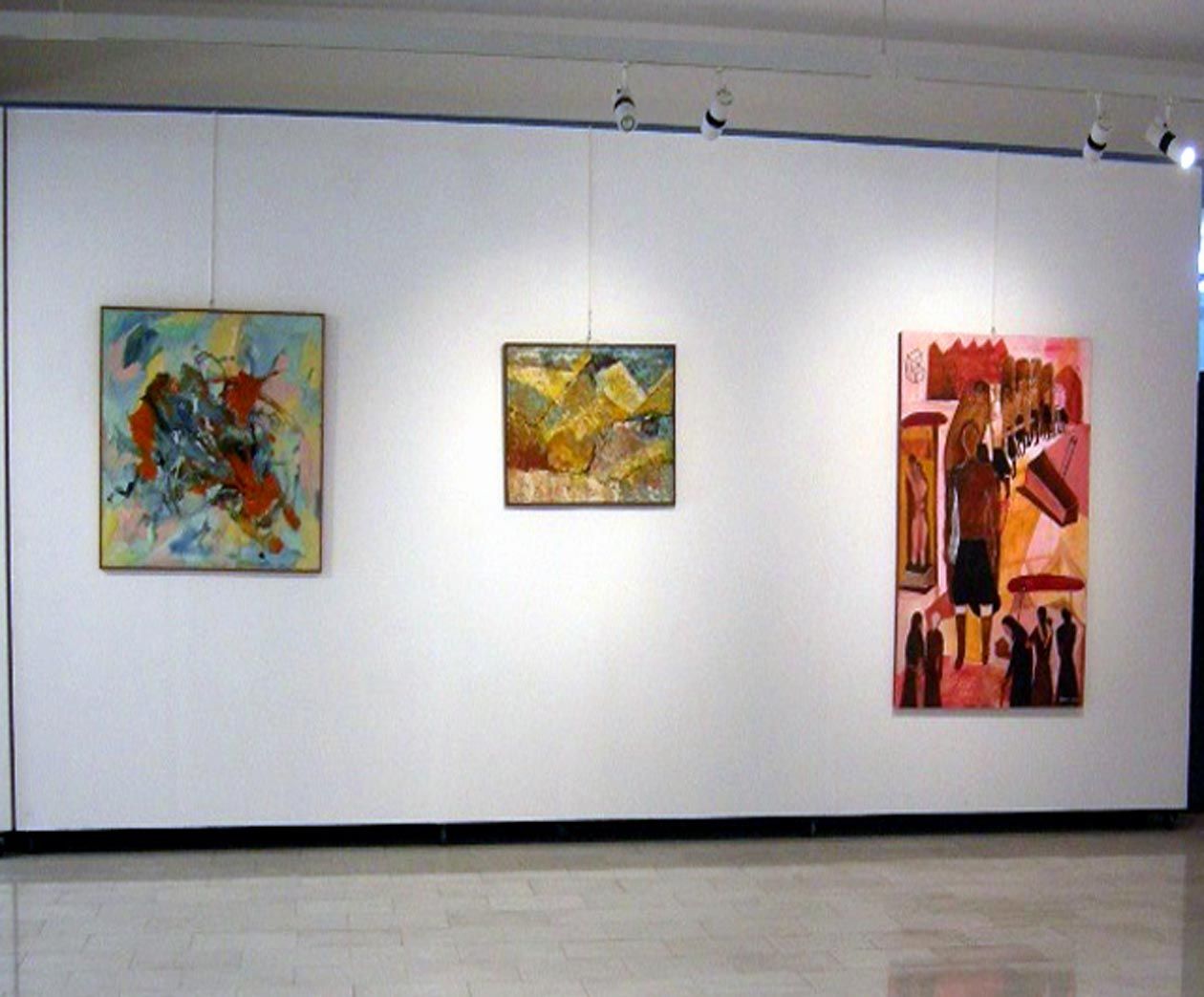
PUBLIC GALLERY
PUBLIC GALLERY
Lemesos (Limassol) Municipal Art Gallery hosts over 600 paintings, sculptures, pottery and mixed media pieces, representing one of the largest and richest assortment of Cypriot modern art. Artwork is exhibited in an old building designed by German-Jewish architect Ginsdbury in 1938, as well as new ground halls.
In the old building one can find artwork by famous Cypriot artists such as Adamantios Diamantis, Christoforos Savva and Telemachos Kanthos while the ground halls include pieces of new Cypriot artists. Exhibits in the museum basement include the National Liberation Revolution tribute collection which belongs to the Historical Remembrance Council.

CYPRUS THEATRE MUSEUM
CYPRUS THEATRE MUSEUM
The Cyprus Theatre museum is housed in the Panos Solomonides Cultural Center and was inaugurated in 2012. Thematic sections include “The History” (depicting the major stages of theatre activity in the island), “The Contributors” (highlighting the important phases of theatre production) and “The Performance” (exhibiting costumes from major and symbolic performances of Cypriot theatre history).
The collections are enriched by exhibits such as printed material, costumes, scale models, props, set and costume designs, photographs and posters allowing visitors to glimpse in the island’s rich history of theatre.

WATER MUSEUM
WATER MUSEUM
The Water museum is situated next to the offices of Lemesos Water Board and the building housed the old Lemesos (Limassol) Water Pumping Station (the “Water Machine”) which was build in 1925. It is recorded in the Protected Historic Buildings List of the Cyprus Department of Town Planning and Housing and was used to pump water from the Garyllis Delta aquifer. Water was distributed to the town of Lemesos using water pipes via the Lemesos Water Tower. This distribution system was considered a major innovation not only for Cyprus but for the whole geographical region.
Restoration of the old building of the Water Pumping Station was carried out in recent years and included a new modern building which was created adjacent to the old one to house the “Water Museum and Center of Water Awareness Development”. Exhibits in the Water museum include valuable archaeological pieces associated to water and numerous unique objects and instruments related to pumping, recording the consumption, quality testing or other water activities.
Collections are further enhanced by extensive photographic material and a short film highlighting the significance and role of water in the town’s history.
Larnaka Museums
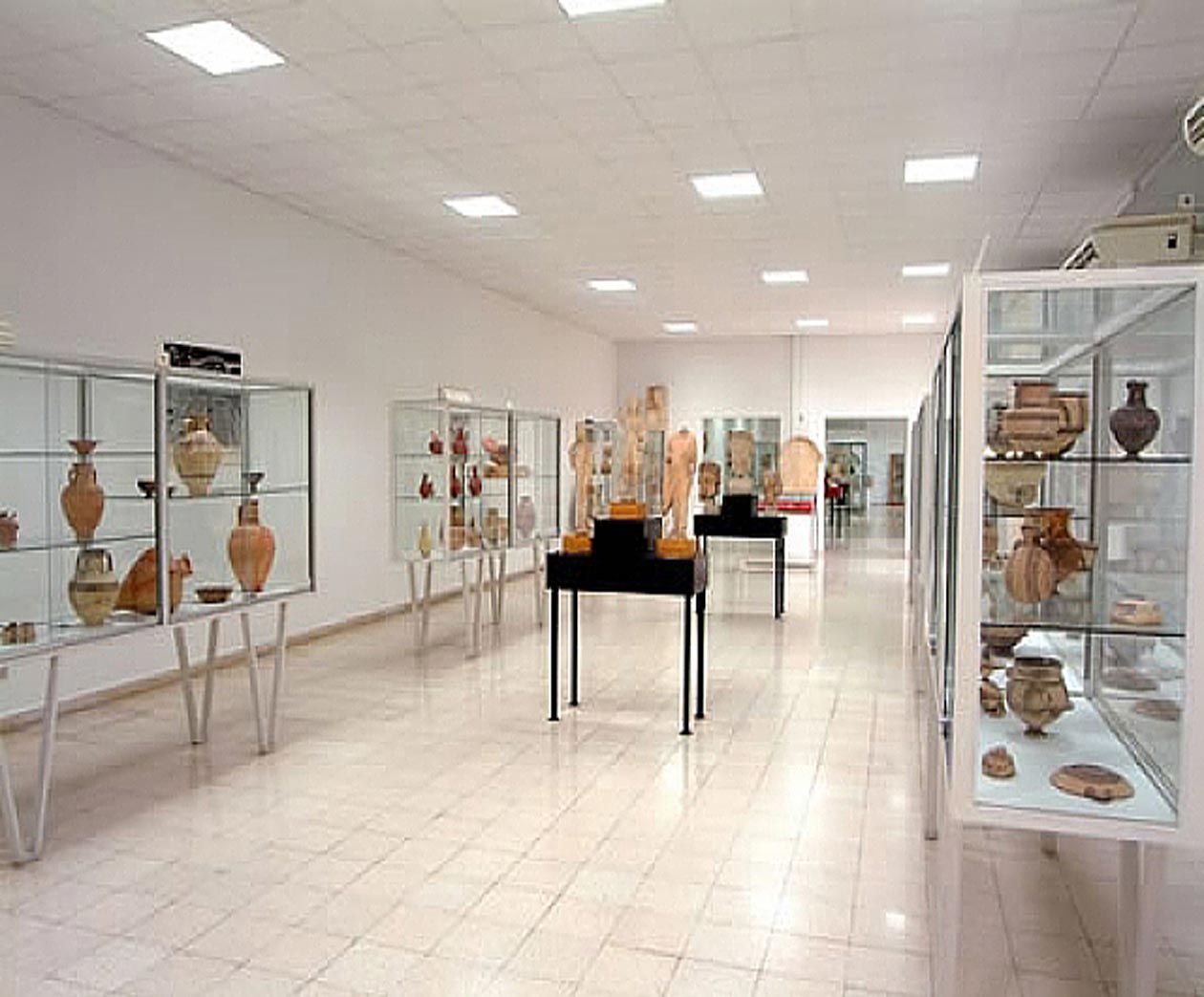
Archaeological Museum
Archaeological Museum
The District Archaeological Museum displays an extensive assortment of archaeological findings which originate from the whole district of Larnaka. These include the ancient city-kingdom of Kition, Tenta-Kalavasos and the main Neolithic settlements of Chirokitia.
Additionally, a visitor can admire artifacts from the Neolithic period, the Copper era as well as the Archaic, Classical, Hellenistic and Roman periods. Commercial and international ties of Cyprus with various countries during antiquity can be verified by Faience (tin-glazed pottery), ivory and alabaster items.
Apart from the broad selection of local displays, the museum exhibits some exceptional pieces of Egyptian, Mycenaean, Phoenician, Assyrian and Persian origin which were discovered in Larnaka district and might have been imported in past years from neighboring civilizations. This museum is linked with the Aphrodite Cultural Route.

Byzantine Museum
Byzantine Museum
Situated at the church of Agios Lazaros (Saint Lazarus), this museum exhibits some of the cells of the hypostyle porch that still stand to its south. It houses significant religious icons, artifacts and relics such as Byzantine icons, gospels, crosses and miscellaneous religious treasures from the district of Larnaka.
Agios Lazaros church, situated in the city center, is surrounded by a scenic square and represents an outstanding example of Byzantine architecture in Cyprus. It is build over Saint Lazarus’s tomb who came to Cyprus after his resurrection. He lived in Larnaka for 30 years and was appointed as Bishop of Kition by the Apostles Barnabas and Paul.
A procession is held every year, eight days before Easter to demonstrate respect to his memory. During the procession the holy icon of Saint Lazarus is carried through the streets of the city center.

ENVIRONMENTAL INFORMATION CENTRE OF LARNAKA MOUNTAINOUS AREA
ENVIRONMENTAL INFORMATION CENTRE OF LARNAKA MOUNTAINOUS AREA
Situated in the village of Skarinou, this center aims to develop knowledge and give information to visitors in relation to the importance of the rural areas of Larnaka. The center was funded by the European Union’s “Rural Development Programme 2007 – 2013” and is designed to utilize multiple purposes including an exhibition section with arts and crafts, a library and a laboratory where visitors can look through microscopes, which is very popular with children.
A visit to the center can be combined with nature walks, bird watching or cycling since the region is rich in unspoiled countryside and quiet, peaceful locations.
Mrs Anna Kosma, the center’s manageress, states that the establishment’s mission is to protect and preserve the environment by supplying education and information while developing awareness by promoting the three “p”s – Reduce, Reuse and Recycle. The center introduces visitors to the importance of environmental conscience and demonstrates how to reuse everyday objects such as turning cans into candle holders or bottles into vases.

MEDIEVAL MUSEUM
MEDIEVAL MUSEUM
The Medieval museum is situated at the end of the Foinikoudes promenade, on the second floor of the Medieval Fort.
Visitors can admire a wide selection of exhibits, across three rooms, which encompass 15 centuries of history with pieces from the early Christian period (4th – 7th century), Byzantine wall paintings of the 11th – 16th centuries, Medieval glazed pottery from the 12th – 18th centuries, helmets and swards of the Venetian period (15th – 16th century) and metal cooking utensils of the Ottoman period (18th – 19th century).
The museum’s yard displays an assortment of Ottoman cannons and is ideal for open-air events since it includes a 600-seat theatre.
The fort dates back to the Middle Ages with its present form being a result of the Ottoman rule. After the end of the Ottoman era in Cyprus it was converted into a prison by the British and used as such for the first years of their rule.

PIERIDES MUSEUM
PIERIDES MUSEUM
The Pierides Museum – Bank of Cyprus Cultural Foundation is housed in a colonial-style building of 1815 which is the ancestral residence of the Pierides family. It is the oldest private museum in Cyprus and it displays a collection of rare items of the island’s civilization assembled by the Pierides family. The displays highlight the economic, social and cultural development of Cyprus over thousands of years since they date back from 4000 BC to the 15th century AD and represent evidence of the centuries-old civilization that developed in the island. Pieces include the red polished ware from the Early Bronze Age, Roman glassware and medieval ceramic dishes. Additionally, the private courtyard includes Modern Greek and Cypriot sculptures.
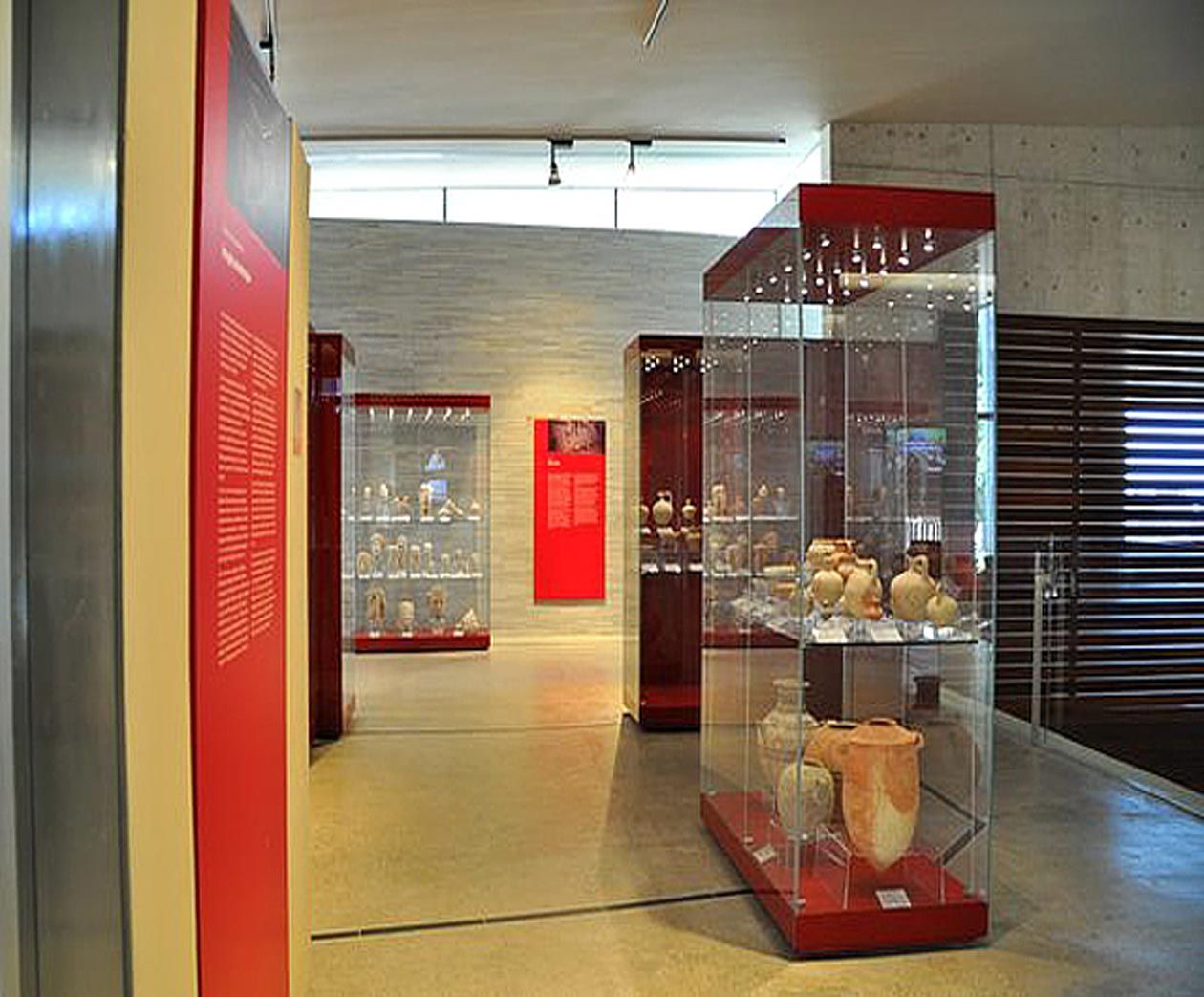
KALLINIKEIO MUSEUM
KALLINIKEIO MUSEUM
The Kallinikeion museum is situated in Athienou and named after monk Kallinikos Stavrovouniotis, a son and benefactor of the village and an exceptional icon painter. The Village of Athienou is considered a place rich in cultural heritage and the creation of the museum was essential to promote this heritage.
The opening ceremony of the museum was performed by the honorable Minister of Communications and Works Mr Nicos Nicolaides on July 3rd, 2009. It is housed in the Kallinikeio Municipal Hall of Athienou and includes the Archaeological Collection, the Collection of Ecclesiastical Art and the Ethnographic Collection.
The general idea and aim of the museum is to introduce visitors, Cypriots and tourists, to local and national history and culture by representing a source of knowledge for customs and practices of past years.

KATO DRYS BEE & EMBROIDERY MUSEUM
KATO DRYS BEE & EMBROIDERY MUSEUM
Situated in the mountainous village of Kato Drys (Greek words for “lower oak”), this unique museum is housed in a four-room complex in a 300-year old house and aims to introduce visitors to the village life of past years as well as traditional industries and professions.
More than 1000 exhibits show the villagers’ everyday life through the ages. These include old farming and household utensils and furniture and displays related to local beekeeping practices. Traditional lace and embroidery (Lefkaritika) dating back to 1880, are exhibited in an adjoining neoclassic house (built in 1937) together with a variety of heritage artifacts. Additional items include souvenirs from the coronations of King George and Queen Elizabeth which were brought to Cyprus by the owner’s grandfather from his trips to the UK to sell lace.
Guided tours are arranged so that visitors can be introduced to the preparation of homemade products such as bread, dried figs and fig pies and the production of traditional wine and Zivania. Moreover, visitors can join in various activities such as olive, almond and grape picking depending on the season or just enjoy a relaxing coffee in the orchard or courtyard of the premises and buy traditional produce made from honey, olives wine or carobs.

PANO LEFKARA FOLK ART MUSEUM
PANO LEFKARA FOLK ART MUSEUM
The Museum of Popular Art is housed in the Patsalos House in the village of Lefkara and it displays extraordinary embroidery pieces some dating back to the 19th century.
It was created thanks to the donation of Stelios Ioannou, a local businessman with the assistance of the Department of Antiquities and was open to the public as from August 1988, the inauguration held by the then speaker of the House and originating from Lefkara, Dr Vassos Lyssarides.
The building represents a typical sample of the local architecture of the 19th century with traditional components such as the arch, an imposing element, ports in the front doors, big interior solar oven, hull and inner patio with flowers. The design includes a spacious room that served as a bedroom, dining room and storeroom.

COSTAS KAIMAKLIOTIS FOLKLORE MUSEUM
COSTAS KAIMAKLIOTIS FOLKLORE MUSEUM
The museum is situated in the village of Aradippou and was founded in 2007, aiming to promote, preserve and assist in research of Cypriot Folklore Tradition. It is housed in a traditional 1901 mansion, with the basement and upper floor utilized for exhibits and the amphitheatre in the yard used for cultural events and exhibitions during the summer.
In the basement one can visit the Sun Room, Family Chamber, Weaving Hall, Domestic Appliances Hall, Farming and Animal Raising Hall and Traditional Jobs Hall. Additionally, visitors can watch the seasonal process of breeding silkworms since they make their cocoons and then hatch as silk moths during the Spring months.
In the upper-storey rooms one can find the Hall of the Social and Cultural Traditions of Aradippou where the traditional wedding ritual “the dressing of the bride” is re-enacted.
The museum building originally belonged to the Kostas Xatzikakou family, was later bought by the Pavlos Konstantinides family and then the Kaimakliotis family who in turn donated it to the Municipality of Aradippou in memory of Kostas Kaimakliotis.
Paphos Museums

ARCHAEOLOGICAL MUSEUM
ARCHAEOLOGICAL MUSEUM
The Pafos District Archaeological Museum displays an assortment of pieces dating back from the Neolithic Age to 1700 AD which originate from the Pafos (Paphos) region.
The displays are located across five rooms and come from Palaipafos (Kouklia), Nea Pafos (present-day Pafos), and Marion-Arsinoe (Polis). Additionally, the collection is enriched by finds from the villages of Pegeia, Kissonerga, Lempa, Pano Arodes, Salamiou, Akourdalia, Pomos, Kidasi and Geroskipou. Items are divided in the separate rooms according to the period of origin. Indicatively, the first room includes the Neolithic, Chalcolithic and Bronze Age with coins cut from the mint of Pafos. The second room covers the Iron Age to the Classical period containing a tombstone from Marion with the Cyprosyllabic script while the third room houses the Hellenistic and Roman periods including a unique marble bust of Aphrodite and a marble statue of Asklepios. The fourth room displays items from the late Roman and early Christian periods and the final room includes pieces from the Byzantine period and the Middle Ages.
The museum in linked to the Aphrodite Cultural Route.

KATO PAPHOS ARCHAEOLOGICAL PARK
KATO PAPHOS ARCHAEOLOGICAL PARK
The Archaeological Park of Kato Pafos (Paphos) is included in the UNESCO World Heritage Sites list since 1980 and represents one of the most prominent archaeological sites of the Island.
The city was moved to its present location near the harbor at the end of the 4th century BC by Nicocles, the last king of Palaipafos and it was the capital of the Island between the 2nd century BC and the 4th century AD.
The visitor can admire sites and monuments from the 4th century BC to the Middle Ages with the majority dating from the Roman period. The most profound exhibits are the elaborate mosaic floors of four roman villas, the house of Dionyssos, Theseus, Aion and Orpheus which illustrate scenes from Greek mythology.
Other monuments of exceptional value include the Asklepeion, the Odeon, the Agora, the Saranta Kolones (forty columns) Castle, the Limeniotissa ruins of an Early Christian Basilica and the Tombs of the Kings.

BYZANTINE MUSEUM
BYZANTINE MUSEUM
Situated in the central square of Geroskipou, The Ecclesiastical Museum of Pafos (Paphos) is housed in the same building where the old elementary school of the village used to be.
The museum exhibits a famous assortment of icons, ecclesiastical metallic objects such as censers, lamps and candlesticks and a collection of wood-carved items such as iconostases, Royal doors and crucifixions.
Additional collections include ecclesiastical embroidery such as gold sacerdotal vestments, epitaph and manuscripts and old books. Some of these manuscripts are Gospels of 1462 and 1604, Hymnologium of the 15th century and Firmary of 1853 and detached wall frescoes from the 12th century AD.
An outstanding exhibit, and one of the oldest in Cyprus is the small icon of Agia Marina with uplifted arms in the orans. This particular piece represents the only sample which dates back to the pre-iconoclastic period, 7th-8th century.

EPISKOPI ENVIRONMENTAL INFORMATION CENTRE
EPISKOPI ENVIRONMENTAL INFORMATION CENTRE
The Environmental center is located within the boundaries of the village of Episkopi, is 11 km away from the roundabout at the entrance of the city of Paphos and is on the main road which connects the village with the city.
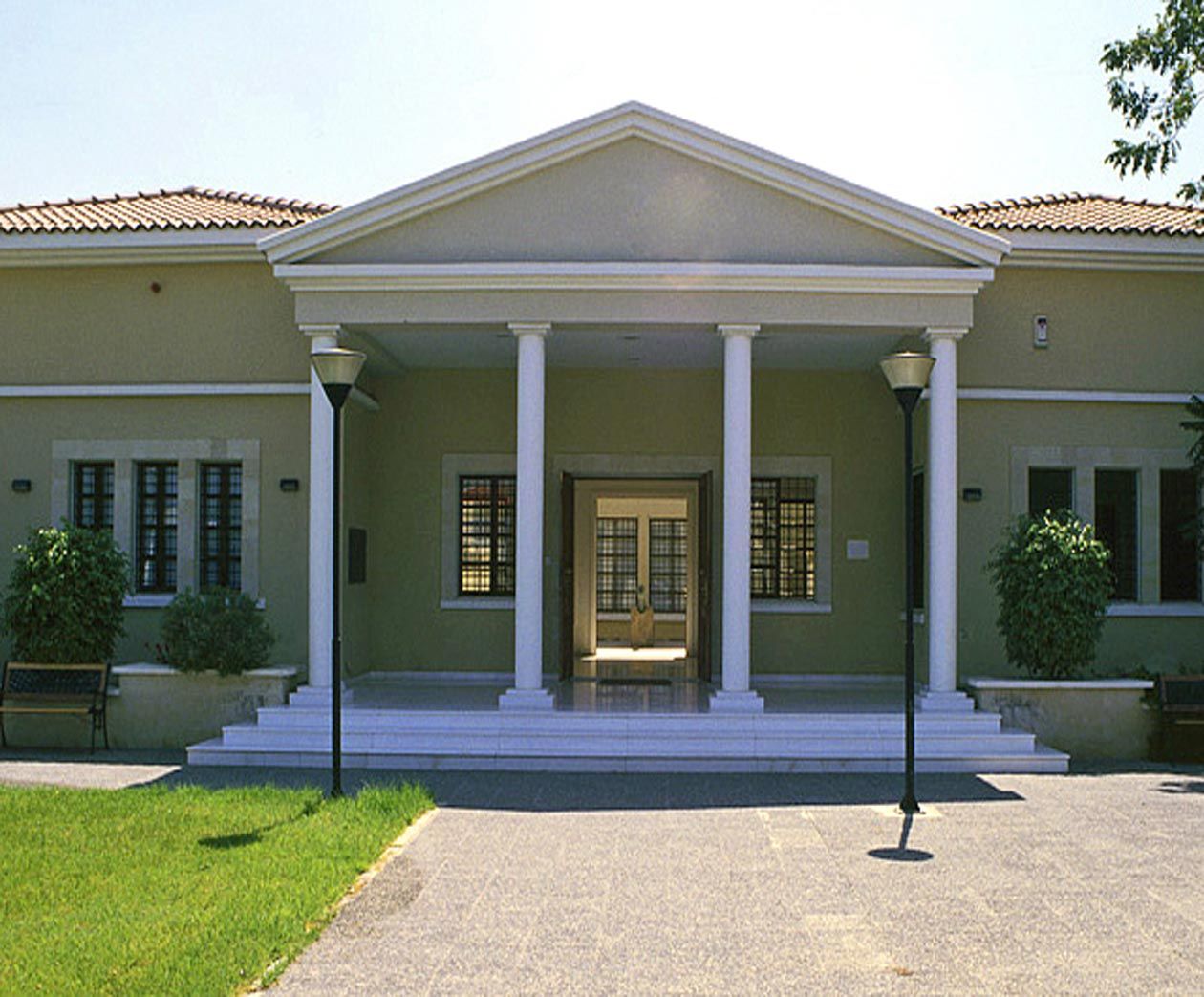
ARCHAEOLOGICAL MUSEUM OF MARION-ARSINOE, POLIS
ARCHAEOLOGICAL MUSEUM OF MARION-ARSINOE, POLIS
The museum is in Polis Chrysochou, the most important resort of the Paphos district and includes a striking collection of items which were discovered in the area where once stood the ancient city-kingdom of Marion-Arsinoe.
The building includes two rooms and an atrium. In the first room one can find items in chronological order, describing historical development of the region from Neolithic to Medieval periods. The second room displays a unique collection of items which originate from the area’s rich necropolis.
During the Hellenistic-Roman period, Marion was renamed Arsinoe while it was a prominent commercial center in the Classical and Hellenistic periods cooperating closely with Athens. Today it is the small town of Polis Chrysochous, mostly known as Polis.
The museum links with the Aphrodite Cultural Route.

ETHNOGRAPHIC MUSEUM OF GEROSKIPOU
ETHNOGRAPHIC MUSEUM OF GEROSKIPOU
This museum was founded in 1978 and is housed in the “House of Hadjismith”, a traditional 18th-century building. Exhibits originate from all over Cyprus and represent an enormous and diverse collection. They describe the daily life, crafts, activities and different variations of the Cypriot folk art in the period between the 19th and early 20th centuries.
A visitor can learn about rural crafts such as pottery, scarf making, rug weaving, rope making and the manufacture of silk for which Cyprus was famous.
The “House of Hadjismith” was part of a larger complex of buildings and represents an exceptional sample of a grand house by the standards of its time. It is listed as an Ancient Monument and once belonged to the British Consular Agent for Western Cyprus, Andreas Zimboulakis. He was a prominent personality, rich and educated, and was responsible for the provisioning of the British troops. Sir Sydney Smith, British Admiral, was a regular visitor, hence giving the nickname “Smith’s House” to the building. The village of Geroskipou gets its name from the Greek words “ieros kipos” (sacred garden), since it was the site of Aphrodite’s sacred gardens.

ARCHAEOLOGICAL MUSEUM OF PALAIPAFOS
ARCHAEOLOGICAL MUSEUM OF PALAIPAFOS
One of the most prominent city-kingdoms of Cyprus was the one of Palaipafos (“old Pafos” in Greek) and is located in the village of Kouklia. It was the first Cypriot site to be included in the World Heritage List of UNESCO in 1980.
Two legends exist in relation to how Palaipafos was founded. One supports that the city-kingdom was created by Agapinor, the king of Tegea (Peloponesus), on his way back from the Trojan War. The other legend says that it was founded by the local legendary king (12th century) and first High Priest of the Sanctuary of Aphrodite, Kinyras. The Sanctuary of Aphrodite is one of the most prominent monuments with its remains dating back to the 12th century BC. It was a place of worship until the 3rd-4th centuries AD.
Important monuments of Palaipafos include the House of Leda, the northeast gate of the defensive wall, the city wall and the Palace of Hadji Abdulla, the church of Panagia Katholiki, the Lusignan Manor House, the cemeteries and the Lusignan sugar-cane refinery in the coastal plain.
The museum displays a variety of striking items from the region and describes how the Cult of the Goddess of Fertility developed into the Cult of Aphrodite. It is housed in a Lusignan manor while the sugar-cane refinery is open to the public.
The site is linked to the Aphrodite Cultural Route.
Famagusta Museums

THALASSA MUNICIPAL MUSEUM
THALASSA MUNICIPAL MUSEUM
The Thalassa Museum was named after the Greek word for “sea” and was developed to support knowledge regarding the island’s marine heritage from the prehistoric period to the present. It is situated in a multipurpose cultural center and represents a modern and interactive architectural design.
The most significant exhibit of the Museum is the life-size reproduction of the famous 4th century Greek trade ship “Kyrenia II” which sunk near the Kyrenia coast around 300BC. Due to the unique design of the building, all exhibits including pottery and antiquities can be viewed from various angles and levels including a bird eye view.
In the Museum basement one can admire the marine life section with exhibits a variety of fish and sea mammals, crustaceans, corals, shells or fossils, some as old as 130 million years.
The Museum also operates as an art exhibition center and houses various events and conferences.

SCULPTURE PARK
SCULPTURE PARK
A novel venue, situated at the crossroad of Cape Greko and Kryou Nerou Avenue, the park consists of around 20,000 square meters of land and cactus area. It offers visitors an ideal place to enjoy a relaxing stroll with eye-catching views of the surrounding area and numerous benches along its sidewalks to sit and unwind.
The park includes sculptures by more than 50 artists from numerous countries who took part in the annual Sculpture Symposium which is organized by the Municipality of Ayia Napa. New pieces are added to the collection constantly to enrich the variety of the collection and it is worth mentioning that in 2015 artists from around the world turned the park into an open-air workshop by creating their sculptures on-site for more than three weeks.
The venue is extended to include the park of Mediterranean Plants, Cacti and Succulents which aims to exhibit the various cacti and dried plant varieties of the island.

AVGOROU FOLK ART MUSEUM
AVGOROU FOLK ART MUSEUM
In a short distance from Ayia Napa, the Avgorou Ethnographical Museum which can be found in the village of Avgorou is situated in an old two-storey traditional house within an extensive courtyard. The museum exhibits a variety of items including traditional furniture and old silk wheels and introduces to visitors the way of life of previous generations.
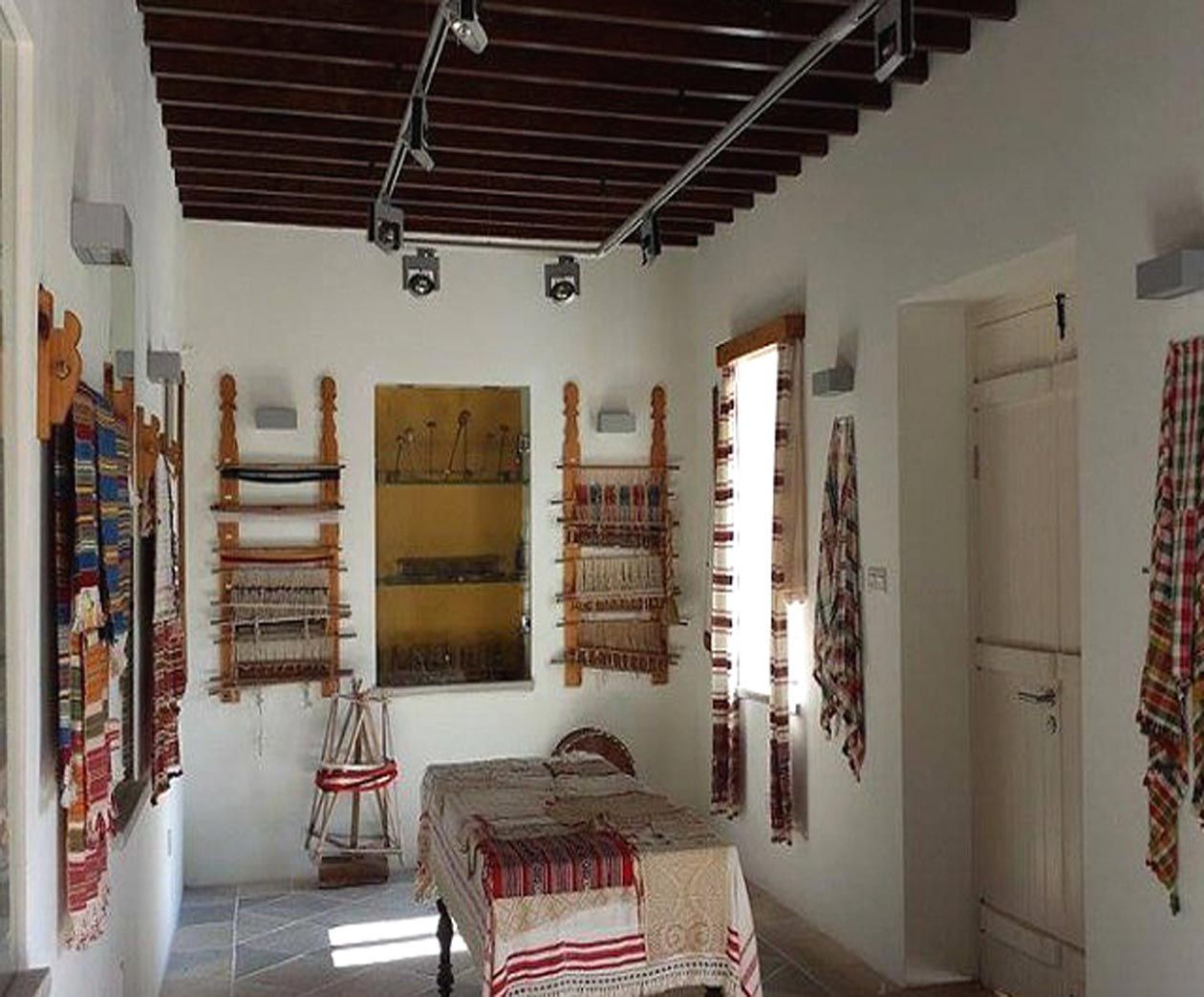
THE TRADITIONAL CYPRIOT HOUSE IN PARALIMNI
THE TRADITIONAL CYPRIOT HOUSE IN PARALIMNI
This museum is situated in the center of Paralimni and displays include traditional household items and utensils such as costumes, kitchenware, tools, weaver’s looms or hand mills. In the spacious courtyard one can find a variety of farming equipment and visitors can enjoy all exhibits free of charge.

DERYNEIA FOLK ART MUSEUM
DERYNEIA FOLK ART MUSEUM
The Deryneia Folk Art Museum is situated in an old traditional house and displays a variety of agricultural tools and equipment which were essential for farming families of past times. It is located opposite the Open Air Traditional Folk Art Museum which further enriches knowledge in relation to traditional professions such as furniture or shoe maker, carpenter, tailor, blacksmith, builder, barber, sculptor, fisherman or farmer. The attractive yards of this museum are further used not only for exhibits but also for civil marriages and numerous cultural events.

SOTIRA ECCLESIASTICAL MUSEUM & CHAPELS
SOTIRA ECCLESIASTICAL MUSEUM & CHAPELS
Housed in the chapel of Saint George in Sotira village, this museum displays rare religious treasures such as ancient icons (including one of Jesus Christ from the 15th century), crosses, liturgical vessels and books, old Gospels and various religious artifacts. Exhibits include one of only three portable wooden altars of the 16th century that exist in Cyprus.
The church of Metamorphosis tou Sotiros (Transfiguration of the Saviour), is situated next to the museum. This church represents a unique sample of architecture and is a stone-built, single-aisle, vaulted building constructed on the foundations of an earlier Byzantine basilica temple.
The importance of the village of Sotira during Byzantine times can be verified by the number of old churches situated in the vicinity.